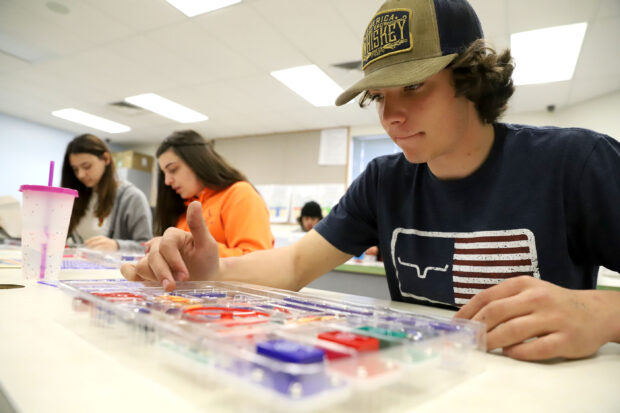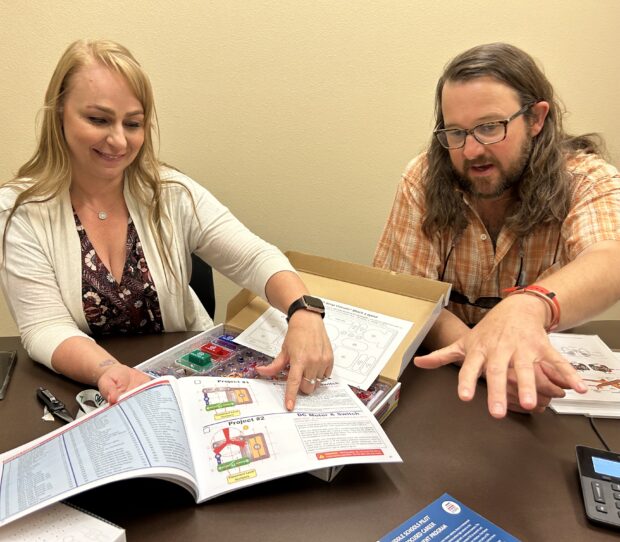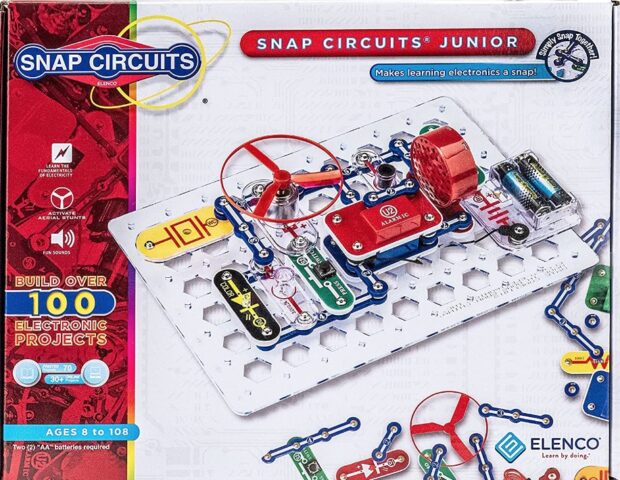
Two College of Western Idaho program coordinators are spreading their passion for career technical education to at-risk teenagers in seven alternative high schools — Meridian Academy, Initial Point, Eagle Academy, Middleton Academy, Bennett Mountain, Heartland and Central Academy.
“Oster (Hernandez) and I have a soft spot for these kids because they’re so often overlooked. A lot of them are just trying to get through high school,” said Jessica Concie, a dual credit CTE coordinator.
Students attending an alternative school end up there for various reasons but usually they share one commonality: The regular classroom learning environment couldn’t hold their interest.
Concie and Oster Hernandez saw an opportunity to provide these young people with a unique learning experience that could trigger their interest in a career path.
“It’s a new way of delivering education — a hands-on experience. And it’s really engaging and helping a student population that needs to learn differently,” said Hernandez.
“They’re not reading a book telling them what to do. They’re actually applying it right then to electronics to drones or whatever it may be. And they’re getting to learn by doing, and that’s what’s getting a hold of them,” he said.
Concie and Hernandez were inspired to create “Pop the Trunk” from an effort that was already underway at CWI. The college’s Center for New Directions had assembled a plastic trunk that included step-by-step lesson plans and two or three hands-on activities, like a circuit board used in the college’s advanced mechatronics engineering technology program.

Concie decided that program would be a perfect way to spark interest. “CTE programs tend to work really well for these students because they’re so hands-on and students can clearly see how what they learn connects to careers,” she said.
To help students find a potential career path, Concie and Hernandez approached their faculty about creating a week’s worth of lesson plans to introduce them to their college’s technical programs. The lesson plans would be accompanied by trunks, filled with equipment and activities to support the lessons.
With the support of their supervisor, Stephen Crumrine, two years ago they launched it with three curricula: mechatronics, unmanned aerial systems and drafting. Materials were purchased using grant money and the program was made available at no cost.
Concie and Hernandez then reached out to alternative high schools. “We sent out emails to see who was interested, then we dropped off a trunk with the teacher so they could see the lesson plans and play with the trunks. If they liked what they saw, we’d deliver the trunks so they could use them with their students,” said Hernandez.
Now in its third year, they added automotive and diesel technology trunks — and welding is next. “It’s been hugely successful because it allows students without access to a lot of resources or support,” said Hernandez. “We’re looking at expanding the program to rural schools, too.”

All five curricula included in the trunks are available at CWI in Nampa. See this link for more information. In the first two years, the program has delivered approximately 325 trunks. They were awarded $20,000 in grants in each of the first two years, but they’ve doubled the request amount in their third year.
They expect to add three to four additional schools with their expansion into rural schools. And they received approval to bring the materials to young people housed in Nampa’s Juvenile Corrections Center.
Given the academic disinterest and an uncertain future facing the alternative school demographic, Crumrine said, “Putting resources in front of students is success enough for us.”
